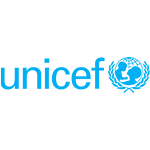Supporting the Introduction of the HPV Vaccine in Ghana
HIGHLIGHTS
- Human papillomavirus (HPV)—the leading cause of cervical cancer—affects thousands of women in Ghana every year.
- To support the Ghanaian government’s launch of the HPV vaccine, we conducted behavioral research and found low levels of active resistance to the HPV vaccine, with concerns about the relevance of vaccines for older children and potential side effects.
- Through a co-design process, we developed a visibility wristband, HPV vaccine quiz game, vaccine invitation card, and parental forum to support the launch of the vaccine and to prompt facility attendance post-campaign.
The Challenge
Human papillomavirus (HPV) is the leading cause of cervical cancer, a life-threatening illness which affects thousands of women in Ghana every year. In 2013, Ghana successfully piloted school-based HPV vaccination in selected areas, however, the country has yet to introduce HPV vaccination as a national program for the prevention and control of cervical cancer.
As the government of Ghana prepares to introduce the HPV vaccine for adolescent girls as part of its routine immunization program in 2025, it’s critical to understand the complex web of inter-related behavioral challenges likely to impede roll-out and acceptance of the vaccine.
Our Approach
We conducted qualitative research to investigate the behavioral factors contributing to HPV vaccine acceptance and uptake, and illuminate the specific, modifiable features of the context that will be the focus of design. We then worked with local stakeholders to co-design behavioral solutions that respond to the insights generated by the formative research to support vaccine uptake.
We also supported the Ghana Health Service to conduct quantitative survey research to capture nuances between different population segments that will inform how designs are tailored, prioritized, and targeted in implementation, and to capture baseline indicators that can inform future monitoring and evaluation efforts as the designs are implemented and scaled.
Results
Five key insights arose from our qualitative research:
- There is low awareness of HPV and cervical cancer among adolescent girls and their caregivers but a strong desire to prevent expensive diseases
- Caregivers hold a belief that vaccines are more relevant for babies than others
- Caregivers are more focused on immediate risks and side effects of the vaccine given distant or unclear benefits
- There is high potential for resistance if caregivers are not meaningfully engaged in roll-out efforts even if their consent is not required
- There are significant hurdles of getting girls vaccinated once it is administered through facilities instead of school-based campaigns.
Using these insights, we provided recommendations to UNICEF and Ghana Health Service related to the communications campaign and health work trainings which were also planned. Additionally, together with young girls, their parents, and other key stakeholders, we developed the following interventions:
- HPV Vaccine Quiz Game: An interactive alternative to more classic HPV education, the game builds comfort and interest in receiving the HPV vaccine while priming boys to be allies (rather than teasing girls as has happened in other settings)
- Vaccine Invitation Card: Prompts discussion with parents and encourages attendance to facilities by making girls feel that a vaccine is available just for her and all she needs to do is to receive it (based on research from a large-scale study done in the U.S.)
- Visibility Wristbands: Wristbands for the caregiver and girl upon vaccination to increase visibility and prompt conversations among peers.
- Parental Meeting: Leverages caregiver identities and builds confidence in the vaccine among parents
Ghana Health Service launched the HPV vaccine—including our recommendations— nationally October 7, 2025.
Takeaway
Introduction of new vaccines requires careful inquiry to understand the behavioral drivers of adoption. Too often programmers overindex on risk perception related to the disease intended to be prevented rather than other drivers that may be more relevant.
By engaging a wide range of influential stakeholders, from health workers and teachers to caregivers and girls in respectful and open dialogue and implementation, we can build more confidence in vaccines like HPV which have tremendous potential for long-term and significant health impact.
Interested in our work applying behavioral science to global health? Email health@ideas42.org or reach out to us on LinkedIn to join the conversation.






